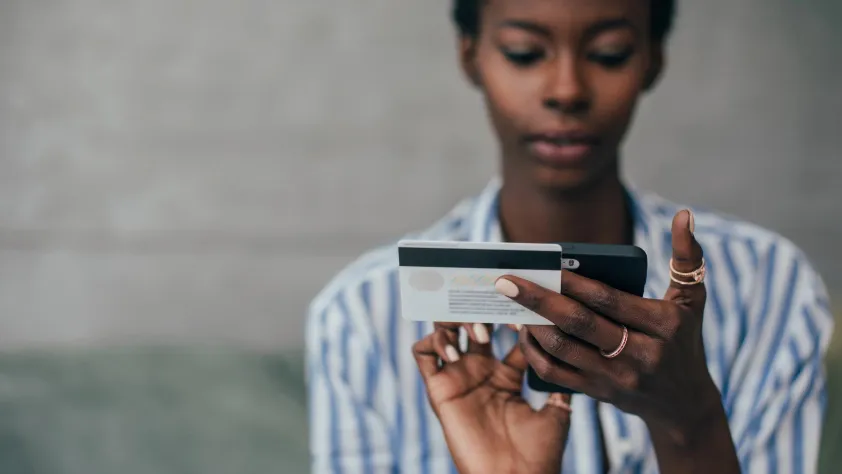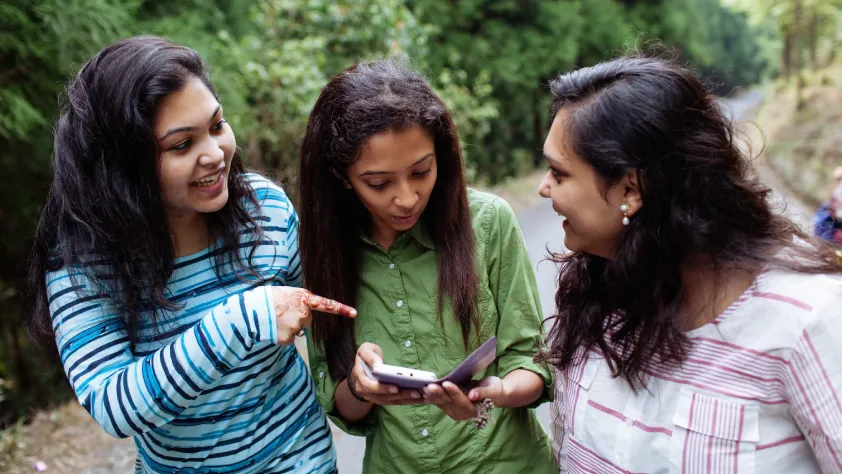Customers
How Messaging Can Help Solve Common Pain Points for Marketers
|
November 1, 2022
Customers
|
November 1, 2022

In 2022, there’s pressure to be everywhere and anywhere for your customers. With so many channels and devices to consider, it’s only natural for marketing leaders to wonder—am I even standing out to customers? Or am I just getting lost in the noise?
If you’ve been asking yourself this, you’re not alone. In Oracle’s 2022 Marketing Trends report1, 35% of marketers surveyed reported that offering an exceptional customer experience is their top challenge. According to the report, 38% of marketers surveyed claim that maximizing channel performance is a top marketing challenge for them. That entails offering an omni-channel approach that lets customers contact them via their favorite channels.
One of those is certainly messaging apps, with Zendesk’s 2022 Customer Experience Trends Report2 showing a 36% increase in their popularity with customers over the last year.
So how do messaging apps help make marketing leaders’ lives easier?
Messaging is a way to help differentiate your brand, and maximize the value and ROI of your marketing channels. According to an Avochato survey, 72% of customers are more likely to purchase from a company that communicates with them in real time via chat messaging. And 63% said they would suggest that friends switch to a company that offers messaging as a communication channel.3
Because of their popularity among shoppers today, messaging apps have the power to help shape and improve every step of your customer journey. From generating awareness and leads to driving conversions and customer retention, here’s how messaging can help relieve the most common pain points for marketers.

According to a HubSpot survey, 27% of marketers said generating traffic and leads will be their greatest challenge in 2022.4
A big part of this challenge? Collecting first-party data about leads in a secure way.
Marketers today are focusing on collecting first-party lead data, as Google is phasing out third-party cookie tracking next year.5 This data collection also needs to be secure and tailored to leads’ preferences. More than 40% of respondents in a recent Airship study said that they are “more likely to continue receiving brand communications” if they are given control over purpose, frequency, and channel of communication.6
With messaging apps, customers can share first-party data on their own terms—which helps build trust and fuel lead generation and nurturing.

Chatbots make it much easier for marketers to collect customer data as well. Instead of sending interested customers to a lengthy online form, chatbots can engage customers naturally through conversation to help gather relevant customer data like name, location, and what products or services they’re interested in.
Through conversation, chatbots can also help qualify leads, gauging their interest and categorizing customers according to how likely they are to convert.
Once marketers get data from their leads, they can use that information to send them personalized messages and offers, like:

Customers don’t want vague, generalized communication from companies. According to McKinsey research, 71% of consumers surveyed expect personalized interactions from companies, and 76% get frustrated when they don't receive them. This research also indicates that 66% of customers want messaging that’s tailored to their needs.7
Convenience is another crucial part of the puzzle, with customers searching for quick and easy ways to get in touch with a business. Customers want a frictionless experience—one that's fast, responsive to their needs, relevant and accurate in its communication, and devoid of unnecessary roadblocks.
The good news is, messaging is a great way to provide automated and personalized communication with prospects and customers, and chatbots can help nurture leads with personalized communication. The technology uses information about the customer to tailor messaging and answer basic queries so agents can focus on more complex customer questions.
AI-powered chatbots send leads relevant messages based on a variety of triggers—from answering a simple “yes/no” question to explicitly requesting information on a specific topic.
A bot might share a company blog post that answers a common question by identifying via AI natural language processing (NLP) the topic a customer wants to learn more about. Not to mention, chatbot conversations can happen asynchronously across time zones, and at the customer’s preferred pace, so they never feel overwhelmed and can pick the conversation back up when they’re ready to purchase.

McKinsey found that 65% of customers want to be offered targeted promotions, and 53% want companies to send triggers based on their behavior.8 Messaging apps make it easy for companies to send this relevant content just as leads are considering a purchase. Not to mention, most messaging apps enable shoppers to purchase products directly with a single click on a branded call-to-action button.
You can set up chatbots to:

Customer support is an important and underrated factor of digital marketing. According to Qualtrics XM Institute, 94% of customers will recommend a company that offers “very good” customer service.10 Superior customer service can help turn one-time customers into loyal ones who not only continue to buy from you, but also recommend your products and services to friends and family.
Aside from helpful reminders and product links, bots can also request feedback from existing customers. This simple feature takes little time from your team, but it goes a long way toward helping your brand improve its products and refine its customer experience.11 And customer feedback is an incredibly valuable tool for marketers. From learning how customers prefer to interact with your brand to which kinds of content they enjoy most, this data is invaluable to continually improving your marketing outreach (and raising your engagement rate).
Happy customers are also loyal promoters who can help boost your marketing efforts with word-of-mouth promotion. That’s more potential customers who can interact with and recommend your brand in future.

On top of being convenient for customers, messaging apps help empower marketers. Bots save you time by gathering insights about leads and nurturing them toward sales, so you and your marketing team can gauge the best ways to attract and grow your audience.